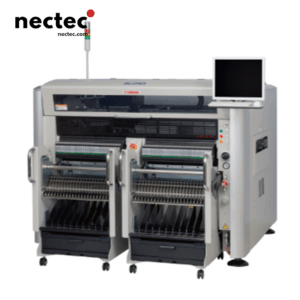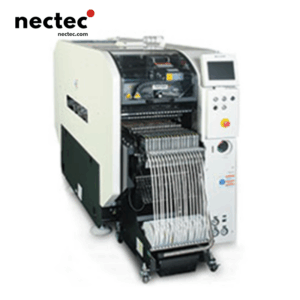In the dynamic field of manufacturing, the need for precision, speed, and efficiency has never been more critical. As businesses seek to streamline operations and reduce costs, technologies such as dörtlü alma ve yerleştirme makineleri are becoming essential tools in the production process. These machines not only enhance productivity but also ensure that the fragile components that are typical in modern electronic devices are handled with care. This article delves into the workings of dörtlü alma ve yerleştirme makineleri, their advantages, and why they are integral to the future of manufacturing.
What Are Quad Pick and Place Machines?
Quad pick and place machines are automated systems designed to handle a variety of tasks in the manufacturing process, particularly in the electronics sector. The term “quad” refers to the machine’s ability to operate with four independent axes, allowing it to pick and place components with unrivaled precision and speed. These machines are critical in assembling PCBs (printed circuit boards), where components must be placed accurately to ensure functionality.
How Do Quad Pick and Place Machines Work?
The operation of a quad pick and place machine can be broken down into several key steps:
- Bileşen Tanımlaması: The machine utilizes advanced vision systems to identify components on a PCB. This includes assessing the orientation, size, and type of components to be picked.
- Toplama Mekanizması: Once the components are identified, the machine’s robotic arms secure the components using vacuum grippers or mechanical fingers, ensuring that even the most delicate parts are handled without damage.
- Placement Algorithm: The integrated software computes the optimal path for placement, factoring in the required speed and precision, while constantly adapting to any variations in the assembly line.
- Kalite Kontrol: After placement, the machine often runs a quick quality check to ensure components are in the correct position and function as intended.
The Benefits of Using Quad Pick and Place Machines
The integration of quad pick and place machines into manufacturing operations offers numerous benefits:
1. Geliştirilmiş Verimlilik
These machines can outperform human workers in both speed and accuracy. By automating the picking and placing process, manufacturers can significantly increase their production rate, leading to lower costs and faster time-to-market for products.
2. Geliştirilmiş Doğruluk
With advanced imaging technology, quad pick and place machines ensure high placement accuracy, reducing errors that can lead to costly reworks or defects in the final products.
3. Çok yönlülük
Quad pick and place machines can handle a variety of component sizes and types, making them versatile tools in a manufacturing environment. Whether dealing with small chip resistors or larger connectors, these machines adapt effectively to different assembly needs.
4. Maliyet Azaltma
While the initial investment in quad pick and place machines may be considerable, the long-term savings on labor and error reduction can make them financially viable. Companies can expect a solid ROI (Return on Investment) due to increased efficiency and reduced waste.
Dörtlü Alma ve Yerleştirme Makinelerinin Uygulamaları
Several industries benefit from the use of quad pick and place machines, including:
1. Elektronik Üretimi
The electronics industry is perhaps the most common application for these machines. From smartphones to computers, quad pick and place machines assembly lines are essential for the accurate placement of components on PCBs.
2. Otomotiv Endüstrisi
As vehicles become more reliant on electronic systems, quad pick and place machines play a crucial role in assembling automotive electronic components such as sensors, controllers, and navigation systems.
3. Tıbbi Cihazlar
In the medical field, precise component placement is critical. Quad pick and place machines are widely used to assemble complex medical devices, ensuring heightened reliability and safety.
Choosing the Right Quad Pick and Place Machine
When selecting a quad pick and place machine, manufacturers should consider several factors:
1. Hız ve Verim
Evaluate the machine’s capability to handle the desired production volume. Machines with higher speeds can help meet rigorous production demands.
2. Bileşen Uyumluluğu
Ensure the machine can handle the types and sizes of components that are specific to your production line. Flexibility in handling various components can improve overall efficiency.
3. Entegrasyon Yeteneği
It’s important to assess how well the machine will integrate into the existing assembly line environment. Compatibility with other equipment can streamline operations and reduce disruptions.
4. Maliyet ve Bakım
Consider the total cost of ownership, which includes not only the purchase price but also maintenance costs and potential downtimes.
Future Trends in Quad Pick and Place Technology
The future of quad pick and place technology appears optimistic, driven by advancements in automation and artificial intelligence. Trends to watch for include:
1. Greater Automation
The shift towards full automation will continue as manufacturers look for ways to reduce reliance on human labor, minimizing the risks associated with errors and inconsistency.
2. Yapay Zeka Entegrasyonu
Artificial intelligence is poised to transform quad pick and place machines by enhancing their decision-making capabilities and improving process efficiency through predictive analytics.
3. Sürdürülebilirlik
With a growing focus on sustainability, the industry is likely to develop machines that utilize less energy and generate less waste, aligning with global efforts towards sustainable production practices.
Sonuç: Üretimin Geleceğini Kucaklamak
As the manufacturing landscape continues to evolve, embracing advanced technologies like quad pick and place machines will be fundamental for companies aiming to stay competitive. By understanding the benefits and implications of these machines, businesses can increase their operational efficiency, accuracy, and ultimately create superior products that meet the ever-growing demands of consumers and industries alike.











